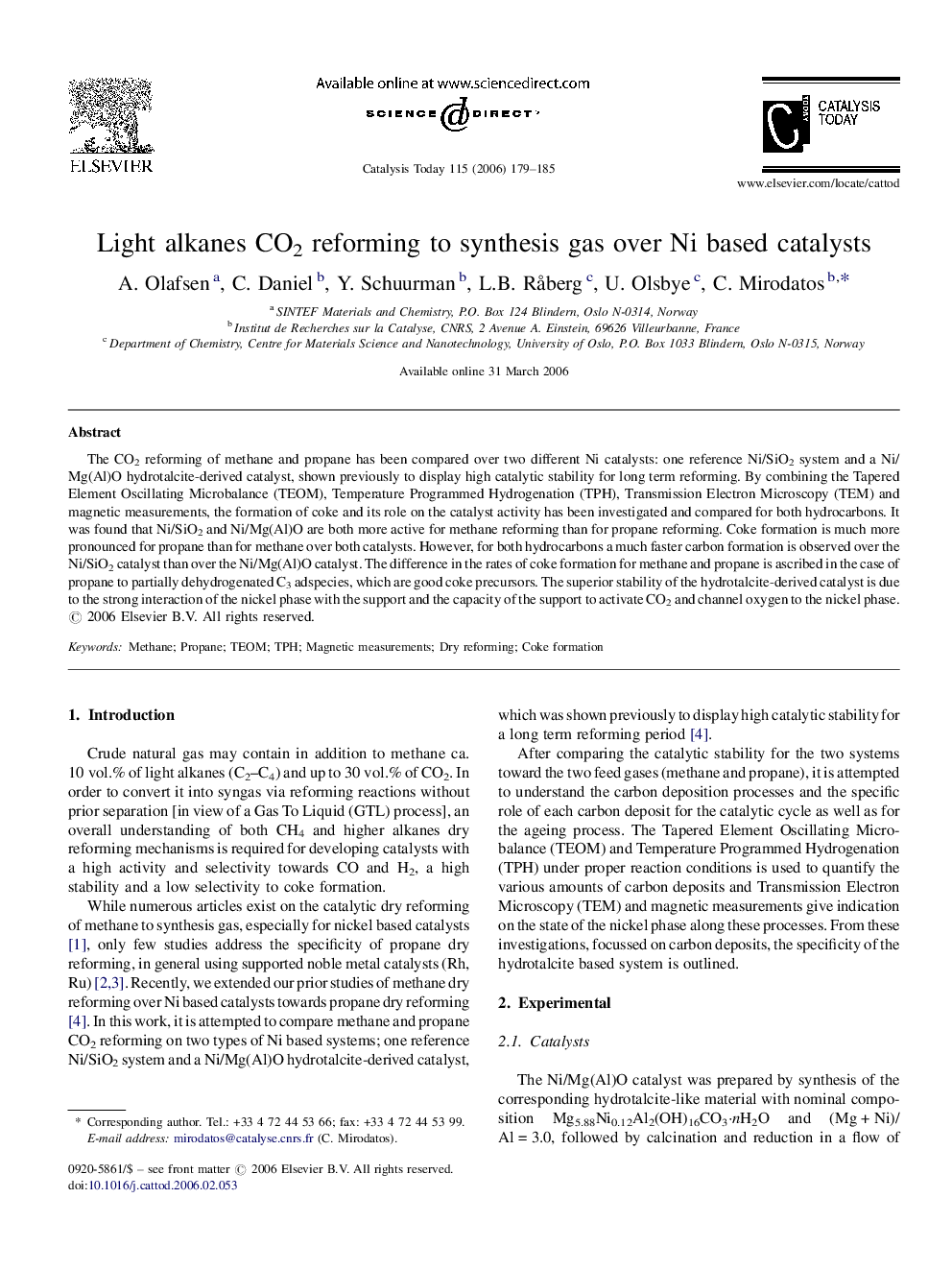| کد مقاله | کد نشریه | سال انتشار | مقاله انگلیسی | نسخه تمام متن |
|---|---|---|---|---|
| 58852 | 47175 | 2006 | 7 صفحه PDF | دانلود رایگان |

The CO2 reforming of methane and propane has been compared over two different Ni catalysts: one reference Ni/SiO2 system and a Ni/Mg(Al)O hydrotalcite-derived catalyst, shown previously to display high catalytic stability for long term reforming. By combining the Tapered Element Oscillating Microbalance (TEOM), Temperature Programmed Hydrogenation (TPH), Transmission Electron Microscopy (TEM) and magnetic measurements, the formation of coke and its role on the catalyst activity has been investigated and compared for both hydrocarbons. It was found that Ni/SiO2 and Ni/Mg(Al)O are both more active for methane reforming than for propane reforming. Coke formation is much more pronounced for propane than for methane over both catalysts. However, for both hydrocarbons a much faster carbon formation is observed over the Ni/SiO2 catalyst than over the Ni/Mg(Al)O catalyst. The difference in the rates of coke formation for methane and propane is ascribed in the case of propane to partially dehydrogenated C3 adspecies, which are good coke precursors. The superior stability of the hydrotalcite-derived catalyst is due to the strong interaction of the nickel phase with the support and the capacity of the support to activate CO2 and channel oxygen to the nickel phase.
Journal: Catalysis Today - Volume 115, Issues 1–4, 30 June 2006, Pages 179–185